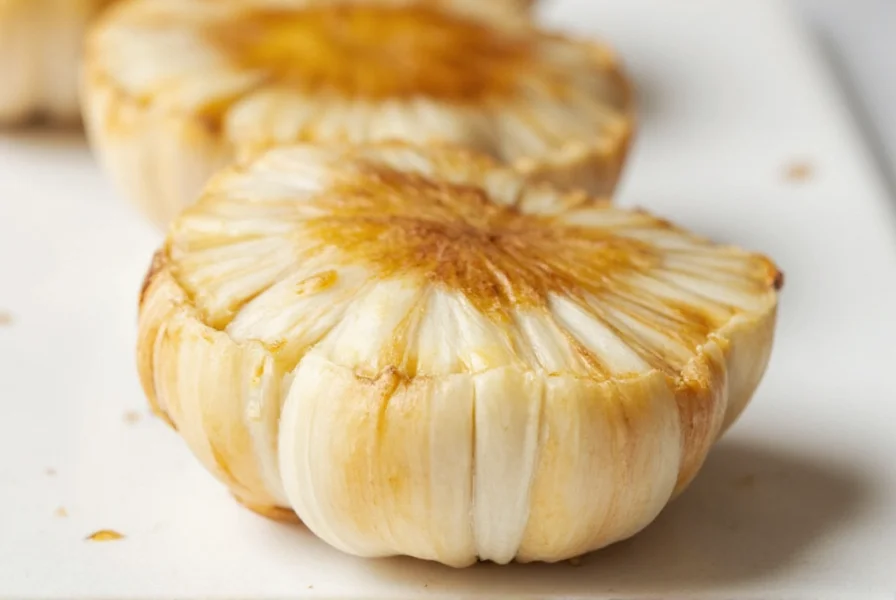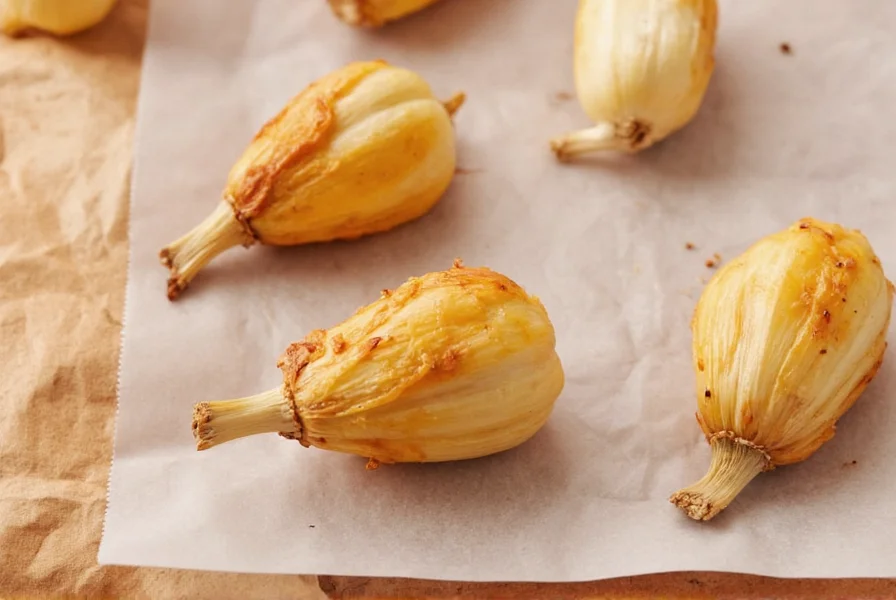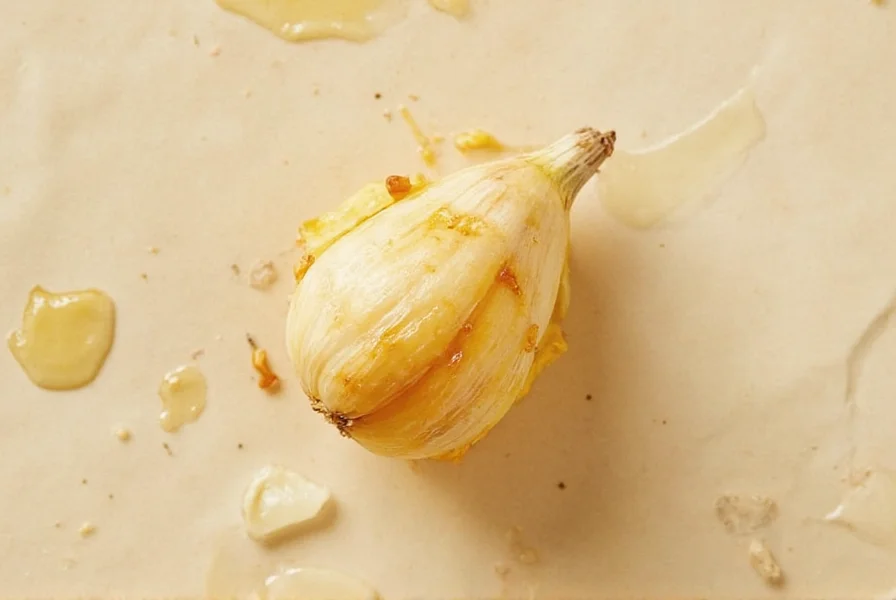Roasting garlic transforms its pungent, spicy raw flavor into a sweet, nutty delicacy that enhances countless dishes. While many recipes call for roasting entire heads of garlic, knowing how to roast a single garlic clove is invaluable when you only need a subtle garlic note without overwhelming your dish. This precise method ensures perfect results every time, whether you're making a small batch of aioli, enhancing a single-serving soup, or creating an elegant finishing touch for steak.
Why Roast Individual Garlic Cloves?
Understanding the benefits of roasting single garlic cloves helps appreciate this technique's value. Raw garlic contains allicin, which gives it that characteristic sharpness but can be harsh in delicate dishes. The roasting process breaks down these compounds through the Maillard reaction, creating complex sugars and mellower flavors. A perfectly roasted individual garlic clove offers:
- Sweet, caramelized flavor without bitterness
- Creamy texture ideal for spreading or mashing
- Reduced digestive irritation compared to raw garlic
- Longer shelf life when stored properly
- Concentrated flavor that goes further than raw garlic

Step-by-Step Guide to Roasting One Garlic Clove
Follow these precise steps for the best method to roast a single garlic clove. This technique works whether you're using fresh supermarket garlic or heirloom varieties from a farmers market.
- Preparation: Preheat your oven to 400°F (200°C). Select a plump, firm garlic clove with unblemished skin. Gently peel away the papery skin while keeping the clove intact—don't chop or mince it.
- Oil Application: Place the peeled clove on a small square of aluminum foil (about 6x6 inches). Drizzle with exactly 1/2 teaspoon of high-quality olive oil. For enhanced flavor, add a tiny pinch of flaky sea salt or a single thyme sprig.
- Wrapping Technique: Fold the foil around the clove loosely—don't seal it tightly. This allows some steam to escape while protecting the garlic from direct heat. Crimp the edges to form a small pouch.
- Roasting Process: Place the foil packet directly on the middle oven rack. Roast for 15-20 minutes. Check at 15 minutes by carefully opening the packet. The garlic is done when a knife inserts with no resistance and the color is uniformly golden brown.
- Cooling: Remove from oven and let cool in the packet for 5 minutes. This allows residual heat to complete the cooking process without burning.
Alternative Methods for Roasting Single Garlic Cloves
While the oven method produces the most consistent results, these alternatives work well in specific situations:
| Method | Temperature | Time | Best For |
|---|---|---|---|
| Oven (standard) | 400°F (200°C) | 15-20 min | Perfect texture and flavor development |
| Stovetop | Medium-low heat | 10-12 min | Quick preparation without oven use |
| Air Fryer | 350°F (175°C) | 10-12 min | Faster cooking with concentrated heat |
| Grill | Indirect heat | 12-15 min | Adding smoky notes to roasted garlic |
How to Tell When Your Garlic Is Perfectly Roasted
Mastering how to identify properly roasted single garlic cloves prevents under or overcooking. Look for these visual and tactile indicators:
- Color: Uniform golden brown (not pale yellow or dark brown)
- Texture: Soft enough that a knife slides in with zero resistance
- Aroma: Sweet, nutty fragrance without any acrid or burnt notes
- Shape: Slightly shrunken but still holding its clove structure
- Internal test: When squeezed, the roasted garlic should extrude smoothly like soft butter

Creative Uses for Roasted Single Garlic Cloves
Don't limit yourself to just adding roasted individual garlic to sauces. Try these professional techniques:
- Compound butter: Mash one roasted clove into 2 tablespoons of softened butter with lemon zest
- Finishing touch: Rub directly on grilled bread or steak for instant flavor infusion
- Single-serving dressings: Blend with 2 tablespoons of olive oil and balsamic for immediate use
- Flavor booster: Add to mashed potatoes, soups, or risotto during final preparation
- Health-conscious cooking: Use instead of raw garlic in dishes for easier digestion
Common Mistakes to Avoid When Roasting Individual Garlic
Even experienced cooks make these errors when attempting how to roast one garlic clove properly:
- Over-sealing the foil packet: Traps too much moisture, resulting in steamed rather than roasted garlic
- Using too much oil: Creates greasy garlic that doesn't caramelize properly
- Incorrect temperature: Below 375°F won't caramelize properly; above 425°F burns easily
- Peeling too aggressively: Damaging the clove's structure causes uneven cooking
- Skipping the resting period: Cutting immediately releases valuable oils and moisture
Storing Roasted Single Garlic Cloves
Proper storage extends the life of your perfectly roasted individual garlic. Follow these guidelines:
- Refrigerate in an airtight container for up to 5 days
- Store submerged in olive oil (with a bay leaf for preservation) for up to 10 days
- Freeze in small portions (one clove per section) in ice cube trays covered with oil
- Never store at room temperature for more than 4 hours due to botulism risk
- Label containers with roasting date for freshness tracking
Frequently Asked Questions
Can I roast a garlic clove without peeling it first?
Yes, you can roast an unpeeled garlic clove, but results differ significantly. Unpeeled cloves take 20-25 minutes at 400°F, develop a more subtle flavor, and require squeezing from the skin after roasting. The papery skin prevents direct oil contact, yielding less caramelization but easier cleanup. For stronger flavor and easier mashing, peeling before roasting produces superior results for most culinary applications.
Why does my roasted garlic taste bitter?
Bitter roasted garlic typically results from overcooking or excessive heat. Garlic burns easily above 425°F, creating acrid compounds. To prevent bitterness, maintain 400°F maximum temperature, check at 15 minutes, and ensure your oven temperature is accurate with an oven thermometer. Using fresh garlic (not dried or sprouting) also prevents natural bitterness from aged cloves.
How much raw garlic equals one roasted clove in recipes?
One roasted garlic clove provides approximately the flavor equivalent of 1.5 raw garlic cloves due to flavor concentration during roasting. However, because roasting transforms sharp compounds into sweet ones, direct substitution isn't always appropriate. For dishes where garlic should be prominent (like garlic bread), use 1:1 ratio. For subtle flavoring (like in mashed potatoes), one roasted clove often replaces two raw cloves.
Can I use roasted garlic in place of raw in all recipes?
No, roasted and raw garlic serve different culinary purposes. Raw garlic provides sharp, pungent notes ideal for vinaigrettes and fresh salsas, while roasted garlic offers sweet, mellow depth perfect for spreads, sauces, and finishing touches. Substitute only in recipes where a subtle garlic flavor is desired. Never replace raw garlic with roasted in dishes requiring garlic's antimicrobial properties (like homemade infused oils), as roasting changes its chemical composition.











 浙公网安备
33010002000092号
浙公网安备
33010002000092号 浙B2-20120091-4
浙B2-20120091-4